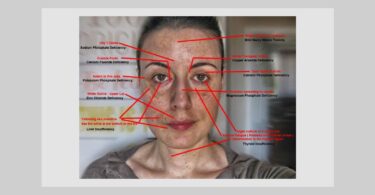The treatment of groups or even large herds in veterinary medicine presents a particular challenge. There are a number of approaches:
- A nosode from the particular disease
- A specific remedy against that disease.
- The epidemic approach as detailed in the Organon aph 100-104
- A “constitutional” approach as advocated by homeopathic vet Chris Day in certain cases e.g. many milking cows of the Friesian phenotype may respond to Calcarea carbonica.
- Treating the whole herd and the farmer as if they were a single organism. This is an approach I have tried on three occasions, twice with great success.
I was called to an organic dairy farm where the white blood cell count in the milk was reaching illegal levels. Cell count is an indication of the level of chronic mastitis in the herd, and must stay below 400,000 cells per mm or the milk cannot be sold.
The farmer was a skilled homeopath, having completed the “Homeopathy At Welly Level” course some five years previously, and had been treating some of the cows homeopathically. His conventional vet had also been involved. Despite these efforts the situation was worsening.
I sat down with the farmer and went through the history. 12 months ago the cell count was 200,000, which was perfectly acceptable. It then gradually began to rise and no homeopathic or conventional treatment could control it. Immediately we must ask why? Disease is always there for a reason. Conventional problems such as milking machine problems had been considered and ruled out already. For a homeopath in this case there were at least two reasons:
- The farmer had developed numbness and coldness in his feet, which proved to be arteriosclerosis of his femoral arteries. Consequently he had to have an operation and three months off.
- The farmer’s wife was an ambitious lady and a famous textile designer. To bring in more money to the farm she had organised the building of an organic restaurant in one of the farm buildings to attract people to see the textiles and hold meetings. The restaurant is now beautiful and doing well, but the building period had upset the farmer considerably. I sat down with the farmer and his wife and had a consultation over a meal and a glass of cider. These are the pertinent parts of the farmer’s story:
‘The builders just come without asking and move things around that I don’t want moved – I feel my home is invaded – it is too hard work for my wife – they are bullying her and I can’t do anything about it’.
What is this like?
‘I feel powerless – like a small boy in shorts at school – I have let my wife down so much – I should be in charge of everything but the builders just don’t listen’.
What makes you fell better?
‘Going out with my cows – I go and stand with them in the field. Getting into my normal routine with my cows’.
Analysis
The farmer feels it is his fault – it is him that lacks power to deal with this situation. He has let down his wife. This suggests a remedy from the mineral kingdom is required – the problem/lack lies within the patient. It would be possible to confuse this case and think an animal remedy would have been required, because the farm is “invaded” and the builders have caused the problem. However that is the situation, not the farmers state. The farmer feels it is his fault because he did not deal adequately with the “invasion”.
The issue lies primarily with power and responsibility – this suggests Row 6 of the periodic table – the gold series. There are also themes of home and routine.
The farmer is ameliorated by going off with his cows – this suggests the remedy required is from the dependent side i.e. LHS of periodic table, particularly column 1-3.
Column 2 is associated with ‘the shell’ (or home), most obvious in Calcarea carbonica, but present in the whole column.
Obviously feeling like a small boy and the need for routine are symptoms we know are present in Baryta carbonica. The discrimination here would have to be with Calc-c, also Column 2. However, home and security is the theme of Row 4, rather than power or lack of it in Row 6.
Bar-c is known to be a major remedy for arteriosclerosis. I elected to give Bar-c 30c to every animal on the farm daily for three days, and then weekly. This was done by making an aqueous solution and putting it into the drinking troughs as well as spraying the cows in the vulva during milking. I did not suggest the farmer took any – I knew with all the spraying in the milking parlour he would be drenched by it!
Result
The farmer ‘phoned up very worried in 3 days’ time – the cell count had gone from 400,000 to 670,000. I explained that this was hopefully an aggravation and to stop dosing and wait. If the aggravation was prolonged we were in trouble because the milk would have to be thrown away and the farmer lose his livelihood. The cell count then started to fall, eventually reaching 180,000 over three months, where it has remained for the last year.
Discussion
This and other similar cases demonstrate that farm animals can be very effected by events in the farmers life. We are all energetic beings and nothing exists in isolation.
It is totally valid to regard a group as a single being – anyone who has watched flocks of birds such as starlings, or shoals of fish, may well have come to this conclusion already.
Philosophically this makes interesting debate over the treatment of the individual. Is it more homeopathic to treat the individual or the group? Can groups of humans be treated in a similar way – can companies, football teams and nations?
Probably.





